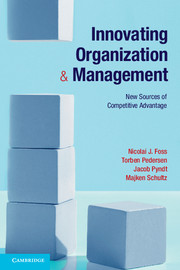Chapter 3 - LEGO
Redefining the boundaries
Published online by Cambridge University Press: 05 June 2012
Summary
In 2008, Jørgen Vig Knudstorp, CEO of the Danish toymaker LEGO, recalled the company’s development during the preceding four years. According to Knudstorp, the journey had been a rollercoaster ride – overwhelming, uplifting, and, at times, bumpy, chaotic, and highly emotional. He joined the company’s strategic business development unit in 2001 before becoming Head of Corporate Affairs and interim Chief Financial Officer (CFO) in 2003 (Figure 3.1). In 2004, he took on the Chief Executive Officer (CEO) position. At the time, the LEGO Group was suffering from annual losses amounting to billions of Danish kroner (DKK), which threatened the company’s independence. The organization was stressed and its identity was unclear. The company had basically lost its way. The initial steps of Knudstorp’s survival plan had been to regain financial control of the company and define its future direction.
From a financial perspective, the turnaround plan was successful. Following a 40 percent decline in sales, the LEGO Group reported annual losses of DKK 1.8 billion in 2004. However, in 2006 and 2007, net profits amounted to DKK 1.29 billion and DKK 1.02 billion, respectively (Table 3.1). Following the implementation of a number of cost-reduction initiatives – such as the relocation of production, the downscaling of the number of components used in production, the divestment of assets (including LEGOLAND theme parks), and a renewed focus on core product lines, user groups and markets – the LEGO Group had stabilized and was building a profitable business platform to serve as the backbone for sustainable growth in the years to come (Figure 3.2).
- Type
- Chapter
- Information
- Innovating Organization and ManagementNew Sources of Competitive Advantage, pp. 41 - 71Publisher: Cambridge University PressPrint publication year: 2012



